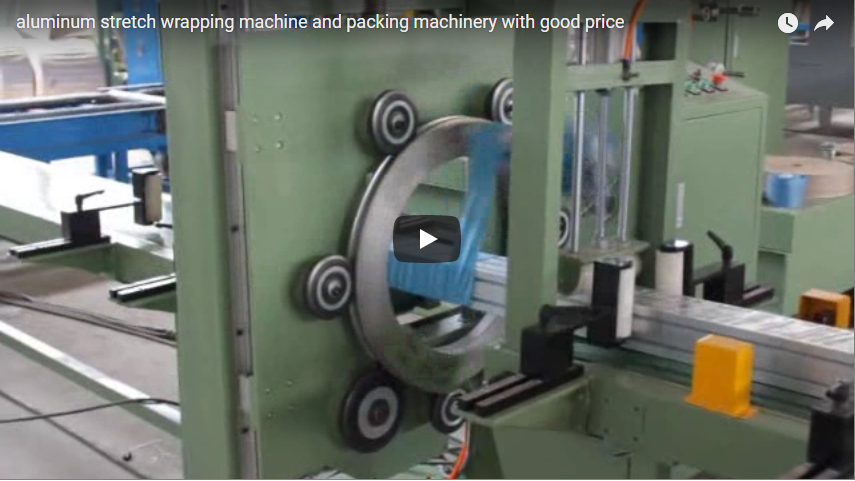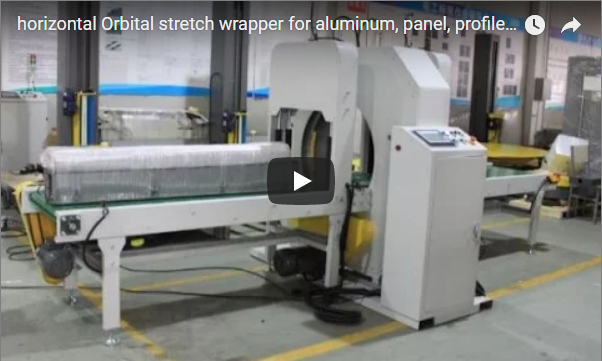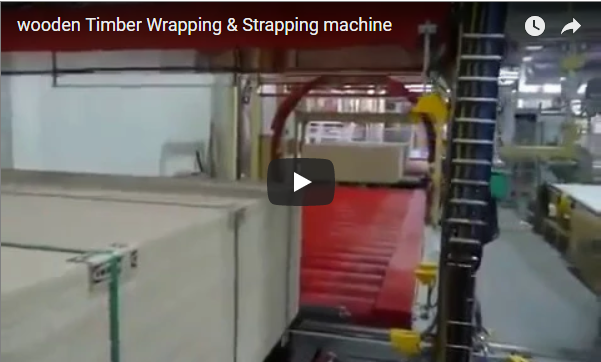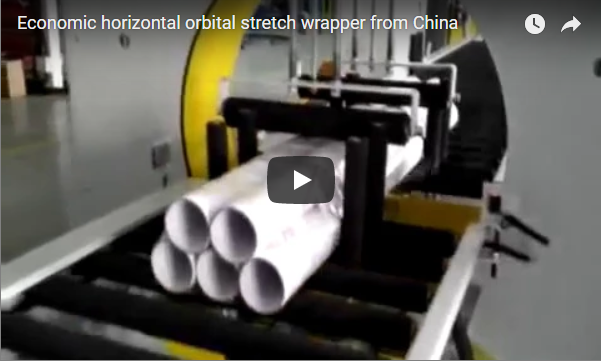Streamlining Motor Packaging: A Deep Dive into Horizontal Stretch Wrappers for Tray Applications
Packing motors, especially when secured on trays, presents unique challenges. Their weight, often irregular shapes, and susceptibility to damage during transit demand robust and reliable packaging solutions. Enter the horizontal stretch wrapper – often called an orbital wrapper – a specialized machine proving invaluable in the motor industry for efficiently securing and protecting components.
1. Understanding the Horizontal Stretch Wrapping Process
Unlike traditional turntable wrappers where the pallet rotates, a horizontal stretch wrapper features a wrapping ring or eye through which the product passes. The stretch film roll is mounted on a carriage on this rotating ring.
Here’s a simplified breakdown of the operation for motor packing on trays:
- Infeed: The tray carrying the motor component is fed onto the machine's conveyor system (typically powered rollers or a belt).
- Wrapping Cycle: As the tray moves into the wrapping zone, the ring rotates around it, dispensing the stretch film. The film adheres to the product, and subsequent rotations overlap, creating a tight, secure cocoon around the motor and tray.
- Film Application: Advanced systems often incorporate powered pre-stretch mechanisms (stretching the film before application), maximizing film yield and ensuring superior load containment.
- Sealing & Cutting: Once the wrapping cycle is complete, the film is automatically clamped, cut, and sealed (often using a heat sealer or wipe-down arm).
- Outfeed: The securely wrapped tray exits the machine, ready for storage or shipment.
2. Key Advantages for Motor Packing on Trays
Employing a horizontal stretch wrapper specifically for motors on trays offers significant operational and protective benefits:
- Enhanced Load Stability: The tight, multi-layered wrap unitizes the motor securely to the tray, preventing shifting during handling and transport, which is critical for heavy or awkwardly balanced items.
- Superior Protection: The stretch film creates a formidable barrier against dust, dirt, moisture, and scuffing, preserving the motor's condition. The tensioned film can also offer minor impact resistance.
- Increased Throughput & Efficiency: Automating the wrapping process dramatically reduces the manual labor required for hand wrapping or banding, freeing up personnel for other tasks and increasing overall packaging line speed.
- Material Savings: Powered pre-stretch systems can stretch film by 200-300% or more, meaning less film is consumed per wrap compared to manual methods, leading to significant cost savings.
- Consistency: Automated wrapping ensures every motor package receives the same level of protection and stability, eliminating human variability.
- Versatility: These machines can often handle a range of tray sizes and motor profiles with minimal adjustment.
3. Critical Technical Specifications to Consider
When evaluating a horizontal stretch wrapper for your motor packing line, consider these parameters:
- Ring Diameter: Determines the maximum cross-sectional dimensions (width x height) of the tray and motor combination that can pass through the wrapping zone.
- Conveyor System:
- Type: Powered rollers, belt conveyor, chain conveyor.
- Speed: Variable speed control is often essential for different product lengths and desired wrap patterns.
- Capacity: Must handle the maximum weight of the motor and tray.
- Film Carriage:
- Pre-stretch Ratio: Fixed or variable percentage (e.g., 150%, 250%, 300%). Higher ratios mean better film economy.
- Film Width Compatibility: Standard film widths (e.g., 500mm).
- Wrapping Speed: Measured in RPM of the ring or packages per hour. Needs to match production line requirements.
- Control System: PLC (Programmable Logic Controller) with an HMI (Human-Machine Interface) for ease of use, recipe storage, and diagnostics.
- Safety Features: Emergency stops, safety guarding, light curtains.
- Footprint and Integration: Physical dimensions and how easily it integrates into existing conveyor lines.
4. From the Shop Floor: Operational Insights
Having worked with various packaging systems, the transition to a well-suited horizontal wrapper for bulky items like motors often yields immediate improvements.
- Film Choice Matters: Don't skimp on film quality. Using the correct gauge and type of stretch film (considering puncture resistance and cling) is crucial for effectively securing heavy motors. Experimentation might be needed initially.
- Maintenance Routines: Regular checks on rollers, belts, the film cutting/sealing mechanism, and sensor cleanliness prevent unexpected downtime. These machines are robust but benefit from preventative maintenance.
- Operator Training: While largely automated, operators need proper training on loading programs, clearing film breaks safely, and understanding safety protocols. Modern HMIs simplify this, but hands-on training remains key.
- Reduced Damage Claims: One of the most tangible benefits we consistently see reported after implementation is a noticeable reduction in shipping damage attributed to load shifting or inadequate protection.
5. Conclusion: A Strategic Investment for Motor Packaging
For manufacturers and distributors dealing with motors packed on trays, the horizontal stretch wrapper represents more than just a packaging machine; it's a strategic tool for enhancing product protection, improving operational efficiency, and reducing costs associated with materials and potential damages. By carefully considering the technical specifications and operational needs, businesses can implement a horizontal wrapping solution that delivers consistent, reliable, and secure packaging results day in and day out.
For further information on specific horizontal wrapping machine models and configurations:
https://www.fhopepack.com/Horizontal_wrapping_machine.html
Contact for inquiries: info@fhopepack.com






